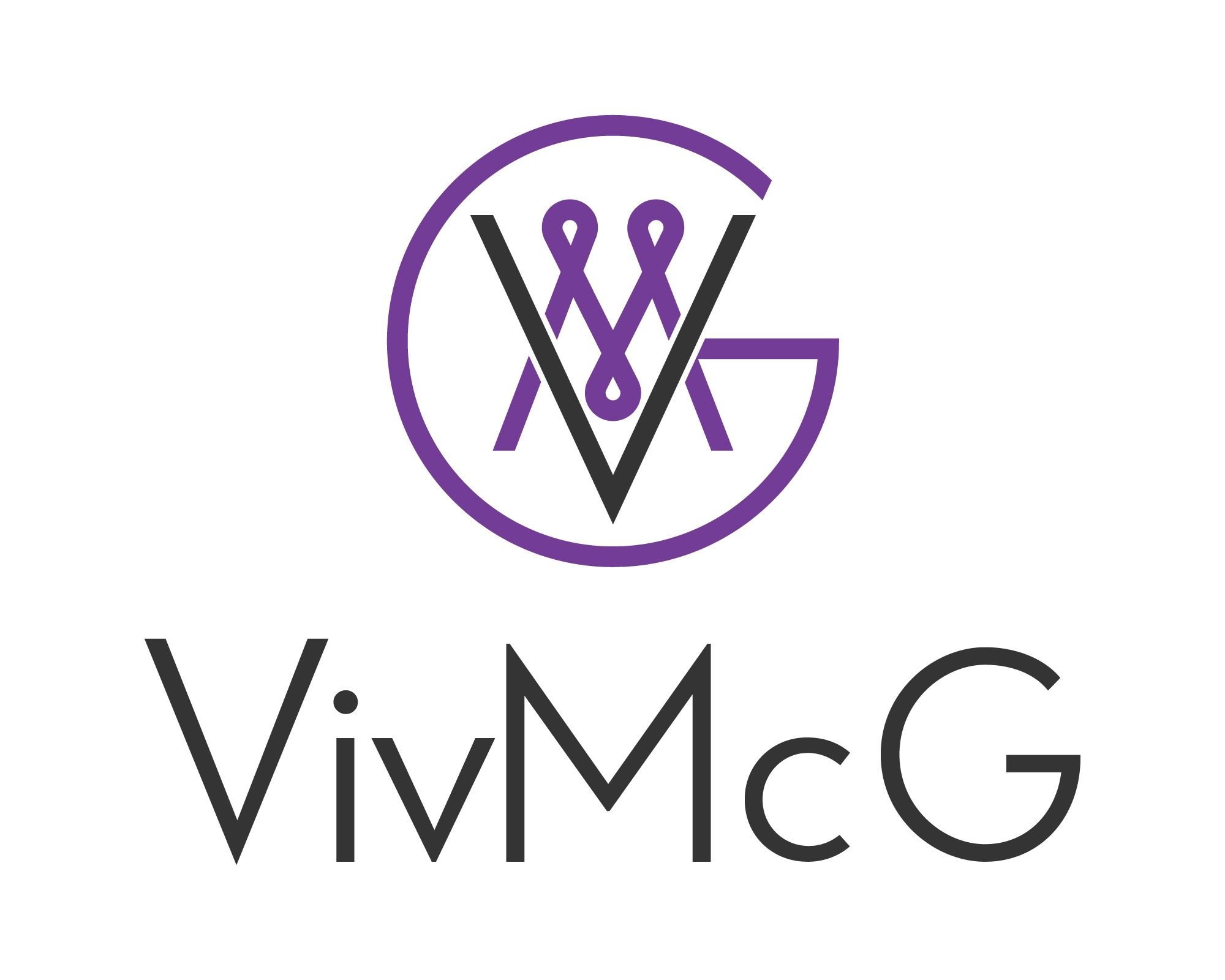start monday with gratitude
week 29
Welcome to Week 29, lovely soul.
Below you'll find the video and video transcript introducing you to this week's quote and musings.
Scroll further and you'll discover this week's daily exercises, high vibe tune, and downloadable wallpapers.
video transcript
Emotions can be high vibrational or they can be low vibrational. They can be expansive or they can be contractive. Depending on whether an emotion is high or low vibrational, expansive or contractive, does that determine where we store a memory associated with that emotion in our body?
For example, when you remember a time when someone hurt you, emotionally, and as a result you experienced a low vibrational emotion such as anger. When you recall that memory, where does your focus tend to go? You go up into your head.
Because when you are recounting the memory, you’re re-living it through your mind’s eye, you’re recalling everything hurtful that was said, and you may even recount in your mind what you could have and should have done better so the person knew they had hurt you or, indeed, you returned the hurt back to them.
Whilst you will feel the emotion of hurt and anger in other places of your body, you will primarily re-experience and re-live any memory related to it in your head.
When you remember a time when someone supported you, cared for you, uplifted you and, as a result, you experienced the high, expansive emotion of gratitude. When you recall that memory, yes, you also re-live it through your mind’s eye, you remember the time in your head. However, whilst you are remembering, whilst you are re-living the gratitude you felt and experienced, something else happens. You start to feel an expansion in your heart, you start to feel a lightness, a warmth in your heart towards that person. And the feeling in your heart begins to take over, begins to grow stronger.
Before long, recounting a memory for which you are grateful, moves your focus from the mind into the heart because the feelings arising from your heart are much stronger than whatever you are recalling in your mind.
No matter whether the memory you recount is a positive or negative one, you recount the details in your mind.
What happens next is what differentiates a memory focused on, say, anger and a memory focused on gratitude.
As you recall a memory focused on anger, a contractive and low vibrational emotion, your heart has no room to expand and so your focus remains in your head.
As you recall a memory focused on gratitude, an expansive and high vibrational emotion, your heart begins to expand and swell until how you feel in your heart about that memory attracts much more focus than what you remember in your head about that memory.
Before long all focus moves to feeling. And where feeling lies is within the heart.
So, where memories associated with low vibrational emotions such as anger are stored deep within the memory bank of your mind, gratitude is a memory which is stored in the heart. Because gratitude is filled with feelings you want to experience, feelings you want to remember, and our heart is where we store our feelings.
When you express gratitude, you are expressing feelings such as love, joy, happiness; feelings that are light and high vibrational which pass through you like the beat of your heart. They are the feelings that keep you alive, the feelings that keep you healthy, the feelings that keep you moving forward with positivity and optimism.
Feelings of gratitude come and then pass on, ready to allow the next wave of gratitude to swell your heart, creating heartfelt memories. And as we find more and more to feel grateful for, our heart remembers and cherishes the feelings that gratitude gives us.
Gratitude is all about feeling and that’s why we relate it to our centre of feeling, the heart.
daily gratitude practice
monday
Think back to a time when someone hurt you, when they said something or did something that hurt your feelings.
Have you got that memory? Hold it. Tune into where you’ve stored that memory.
Where are you re-watching or re-visiting that memory, how have you accessed it?
Are you re-visiting that memory in your head or re-experiencing that memory through your heart?
When we recall a hurtful memory, we recall it using our head and most of our focus remains in our head.
tuesday
Focus again on a memory when someone hurt you or made you angry.
You already appreciate that memories involving low vibrational emotions, such as anger, are held in the head because, when we recount them, we move up into our head and stay in our head to do so.
Today, I invite you to recount this negative memory and while you do so, tune into your heart.
Does your heart feel expansive or constricted as a result of this memory? Does it feel full or contracted?
Low vibrational emotions, such as anger, a contractive emotions, meaning they do not let your heart or your energy expand, they keep them small and tight.
When your heart is kept small, are you able to experience expansion? No.
So when you recall a memory that has negative emotions attached to it, your heart has no room to expand and, so, you remain up in your head.
wednesday
Today I invite you to think back to a time when someone made you feel truly special, truly loved, when they said something that really touched you and made you smile.
Have you got that memory? Hold it. Tune into how it made you feel.
Did it make your heart sing? Did your heart skip a beat with joy? Did your heart swell with beautiful emotions?
The memory is ingrained in your heart, right?
Because when someone says or does something that touches you, you instantly feel it in your heart.
thursday
Today, recall another memory which encourages you to feel gratitude and express gratefulness.
As you recall that memory, tune into your heart.
Does your heart feel expansive or constricted as a result of this memory? Does it feel full or contracted?
High vibrational emotions are expansive emotions which means they encourage our heart to swell and expand.
And as our heart swells and expands, the feelings we experience from our heart become more dominant and our focus naturally moves away from the head to the heart.
friday
Today I invite you to tune into your heart. Whilst you may begin to recall memories in your head, as soon as you can, move your attention to your heart to see what is being experienced solely in your heart as a result of the memory.
Recall a memory where you felt shame.
What, if anything, do you feel in your heart? Is you heart void of feeling? Or is it tight and feeling constricted in anyway?
Move on to a memory where you felt grief.
Again, what are you feeling in your heart? Are you feeling pain? Are you feeling your heart tighten?
Now jump to a memory where you experienced sheer joy.
What are you feeling in your heart? How is your heart changing? Are you feeling you heart expand and swell? Does the feeling in your heart feel good?
Notice how different your heart feels now.
saturday
Our heart is the seat of our emotions.
Emotions, like joy, can make it feel full and expansive whereas emotions such as anger and sadness make it contract and feel tight.
When you experience an emotion today, no matter where on the emotional scale it falls, before labelling that emotion, try to first tune into your heart for a few seconds to see how you experience that emotion in your heart and to see what clues your heart gives you as to the type of emotion you’re experiencing either low vibrational or high vibrational.
sunday
You’ve been learning this week about your reaction to various emotions.
Sometimes all your reaction will be in your head, sometimes it will be primarily in your heart.
Your body will instinctively respond to individual emotions. In that sense it comes pre-programmed.
However, you can strengthen your connection and understanding of what emotion your body is responding to by learning what reaction each emotion encourages. If you are better tuned into your body, you can recognise more quickly when you are experiencing a negative and low emotion and change that into a higher and positive emotion.
Today I invite you to tune into your head and your heart as you play around with various emotions on the emotional scale.
Take note of how your head and your heart respond to each emotion.
Take 5 minute breaks regularly throughout today to play with your emotions and record how your head and heart react, so you can begin to better connect and understand how your body responds to each emotion.
and let's not forget...
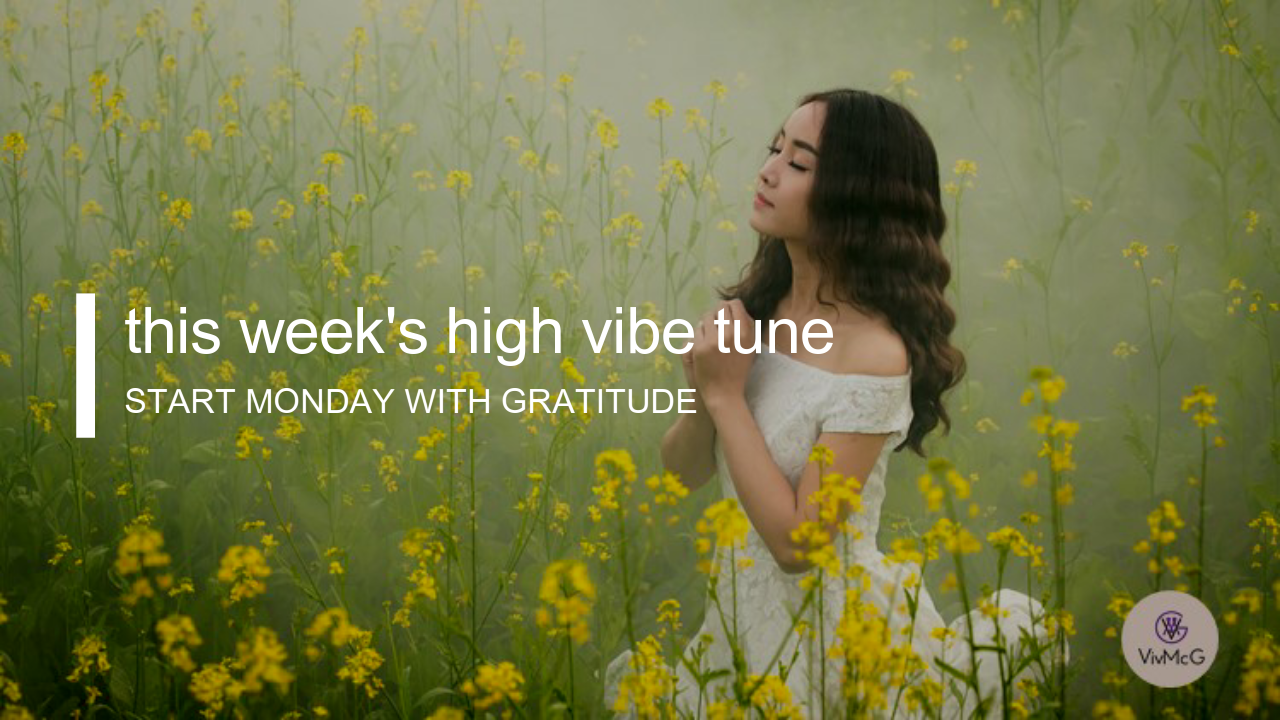
This week's high vibe tune reminds you where the groove is
have gratitude wherever you go...
... with this week's gratitude quote wallpaper.
Note: details of how to download this week's wallpaper is provided below.
“Gratitude is when memory is stored in the heart and not in the mind” ~ Lionel Hampton
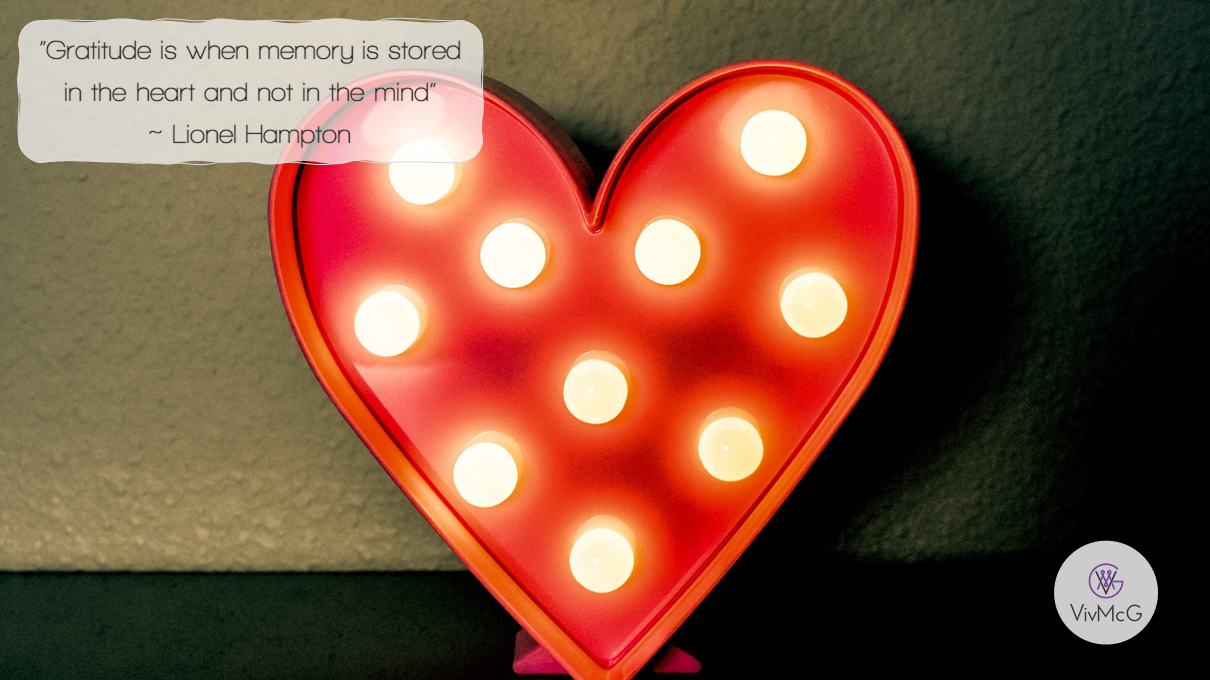
16:9
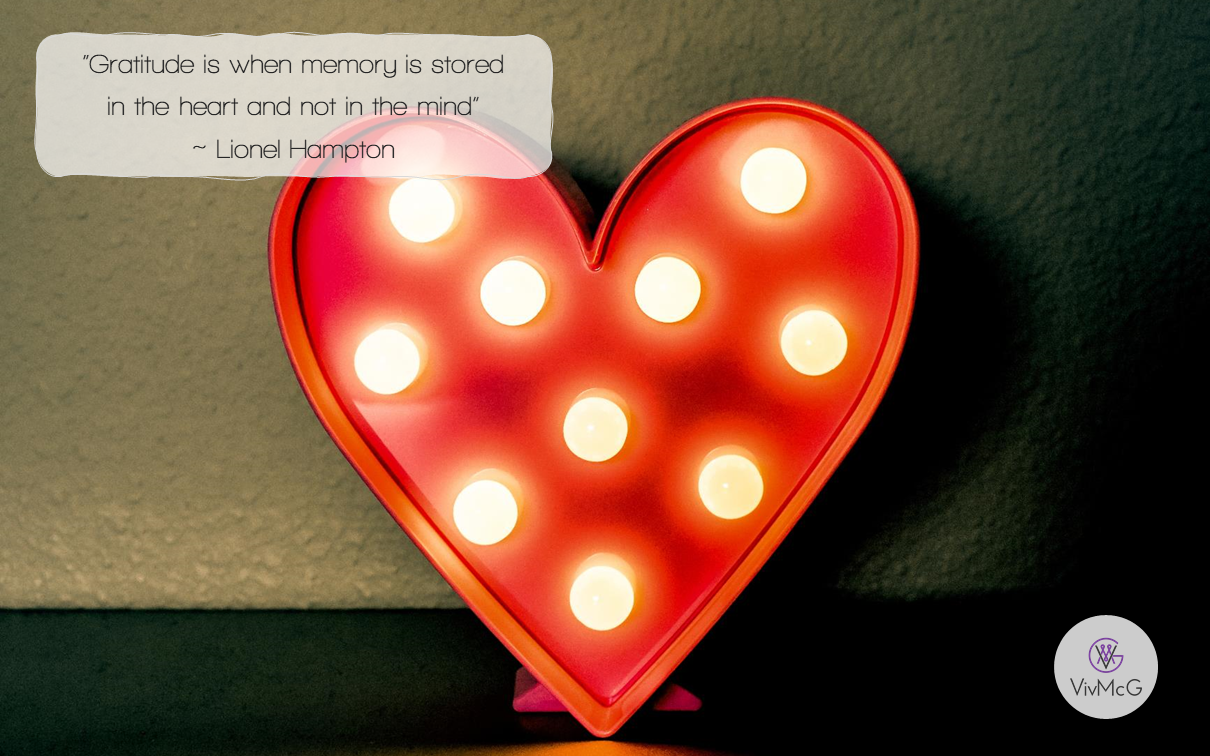
16:10
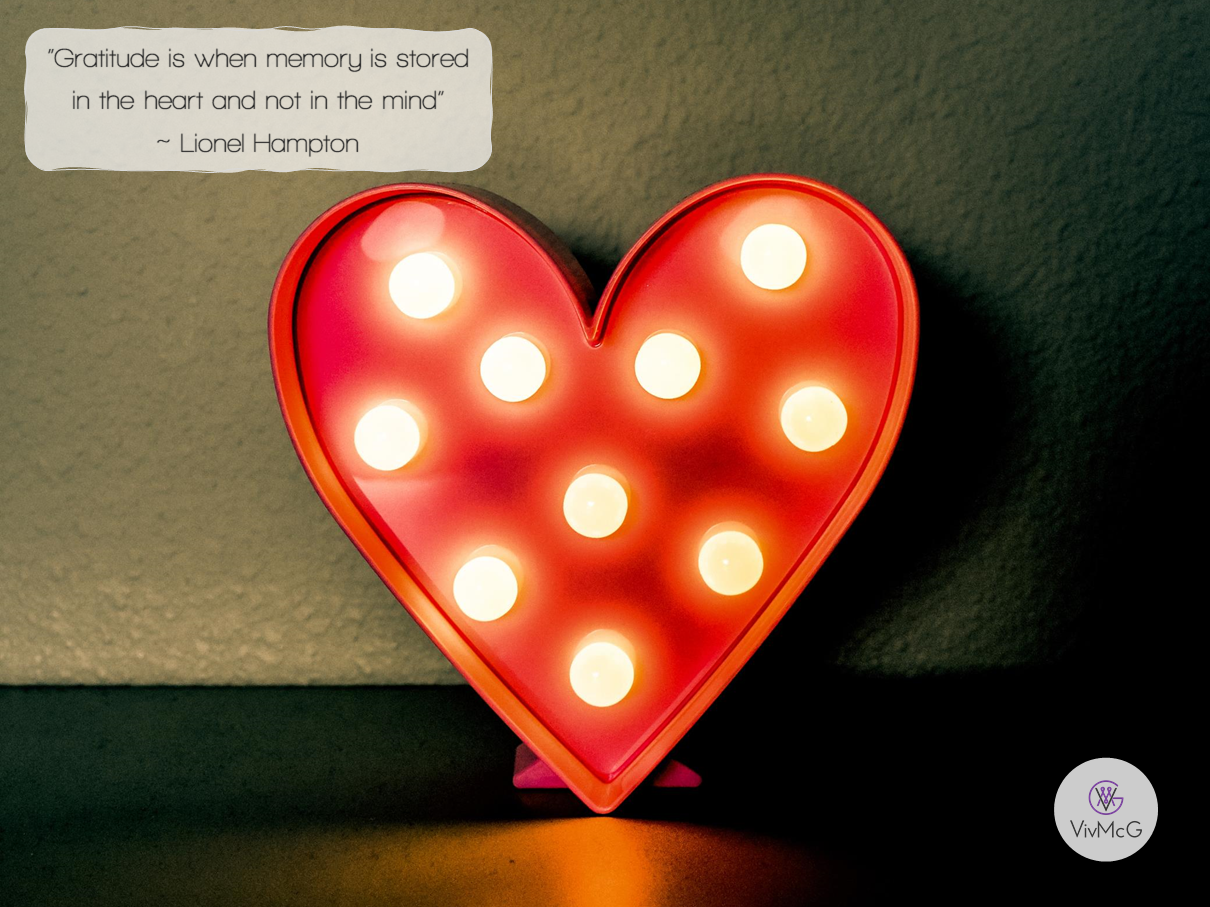
4:3
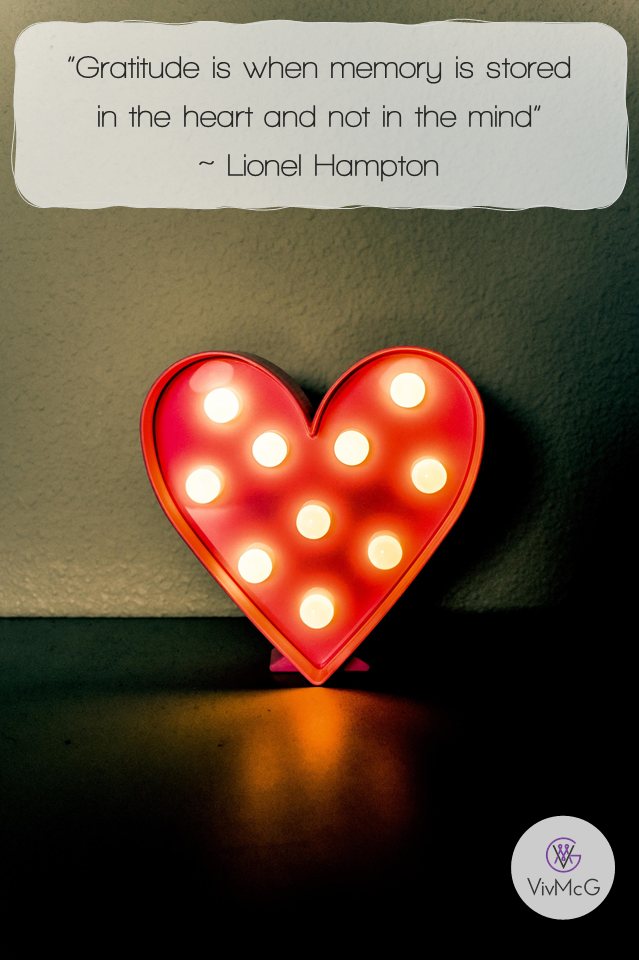
mobile
how to download your wallpaper
desktop
Before copying one of the pictures below, you'll want to quickly check your screen settings because the worst thing you can do is use a wallpaper with an aspect ratio that differs from the aspect ratio of your screen.
The aspect ratio of a rectangle is simply the proportion between width and height. The most common are 16:9, 16:10 and 4:3. And it will be for these 3 sizes that I shall provide you with your free wallpaper.
To find your screen resolution follow this basic guide. Steps for your computer may vary slightly but I hope this will give you some guidance:
- Right-click the desktop and select Display settings.
- Scroll down until you see "Resolution" (you may have to choose an "Advanced" option)
- To find your aspect ratio, divide the width over the height. For example, if my resolution is 1920 x 1080 then I would divide 1920 over 1080 to get 1.778, which indicates a 16:9 resolution. Similarly, 1.6 indicated 16:10 and 1.333 indicates 4:3
- When you've calculated your screen's aspect ratio, go to the picture below that matches that size
- Right click on the picture and select "Set as Desktop Background"
- Choose whether to "Fill", "Fit", or "Stretch" your picture - if you've chosen the right size "Fit" will be your best option
- Select "Set Desktop Background" and you're done
android mobile
- First, save the wallpaper image to your phone by pressing your finger on the wallpaper image and hold down on it until you see a menu.
- From here, click the “Save image” tab, and it will begin downloading.
- The next step is to set this saved image as your wallpaper by pressing and holding a blank area on your screen (meaning where no apps are placed), and home screen options will appear.
- Select 'add wallpaper' and choose whether the wallpaper is intended for 'Home screen', 'Lock screen', or 'Home and lock screen'.
- Another set of options will appear where you can choose where the photo you would like to use will be coming from, namely the Gallery.
- If necessary, crop the image to a suitable size. Once satisfied, simply click 'Done'.
ios smartphone
- First, save the wallpaper image to your phone by pressing your finger on the wallpaper image and hold down for about 2 seconds until a menu appears.
- From here, click “Save Image“, and it will begin downloading.
- The next step is to set this saved image as your wallpaper by, first, going to the 'Photos' app and selecting the wallpaper photo you've saved there.
- Click on the share icon on the lower left corner of the screen, then select 'Use as Wallpaper'.
- Then choose to set the photo as either the lock screen, home screen or both.

